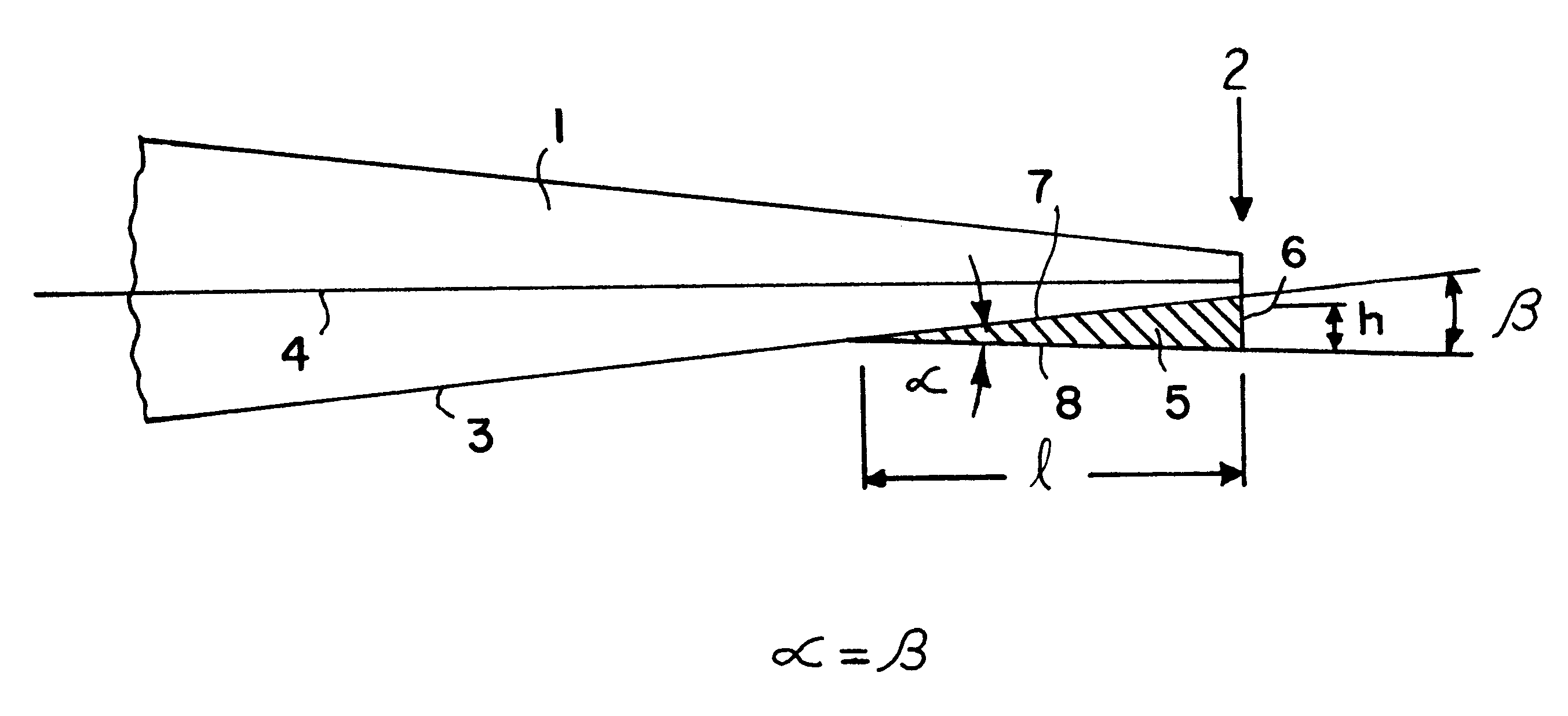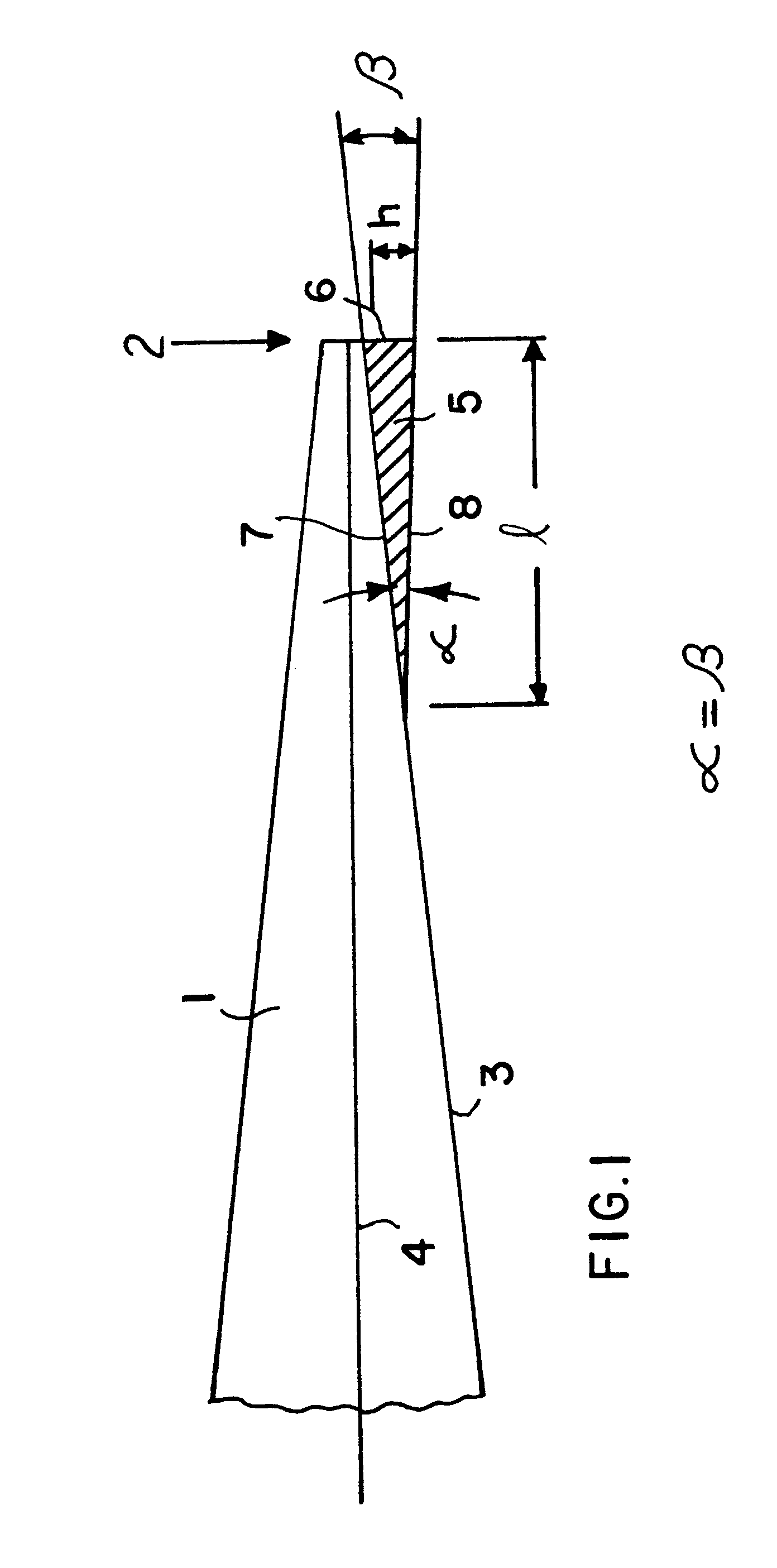Trailing edge wedge for an aircraft wing
a technology for aircraft wings and railings, applied in the direction of wing adjustments, influencers by shock waves, wings, etc., can solve the problems of unavoidable structural tolerances and related asymmetric characteristics of aircraft, and the aircraft cannot compensate for asymmetric aircraft characteristics caused by unavoidable structural tolerances
- Summary
- Abstract
- Description
- Claims
- Application Information
AI Technical Summary
Benefits of technology
Problems solved by technology
Method used
Image
Examples
Embodiment Construction
FIG. 1 shows the attachment of an edge wedge 5 according to the invention directly to the bottom surface 3 of an aircraft wing 1 along the trailing edge 2 of the wing. The edge wedge 5 has an inner surface connected to the bottom wing surface 3 and an outer surface 8 facing downwardly. The edge wedge 5 further has a back end wedge surface 6 having a height h which is preferably positioned in the same plane as the trailing edge surface of the wing 1. The edge wedge 5, specifically its bottom surface 8 has a length 1 in the longitudinal chord direction.
A wedge angle .alpha. is enclosed between the inner and outer surfaces 7 and 8 of the edge wedge 5. The angle .alpha. is also determined by the ratio of the height h to length 1 of the bottom surface 8 of the edge wedge 5. This length 1 is measured in the longitudinal direction of the chord axis 4 of the wing 1 between its leading and trailing edges. The wedge angle .alpha. according to the invention is within the range of about 5.degre...
PUM
 Login to View More
Login to View More Abstract
Description
Claims
Application Information
 Login to View More
Login to View More - R&D
- Intellectual Property
- Life Sciences
- Materials
- Tech Scout
- Unparalleled Data Quality
- Higher Quality Content
- 60% Fewer Hallucinations
Browse by: Latest US Patents, China's latest patents, Technical Efficacy Thesaurus, Application Domain, Technology Topic, Popular Technical Reports.
© 2025 PatSnap. All rights reserved.Legal|Privacy policy|Modern Slavery Act Transparency Statement|Sitemap|About US| Contact US: help@patsnap.com



